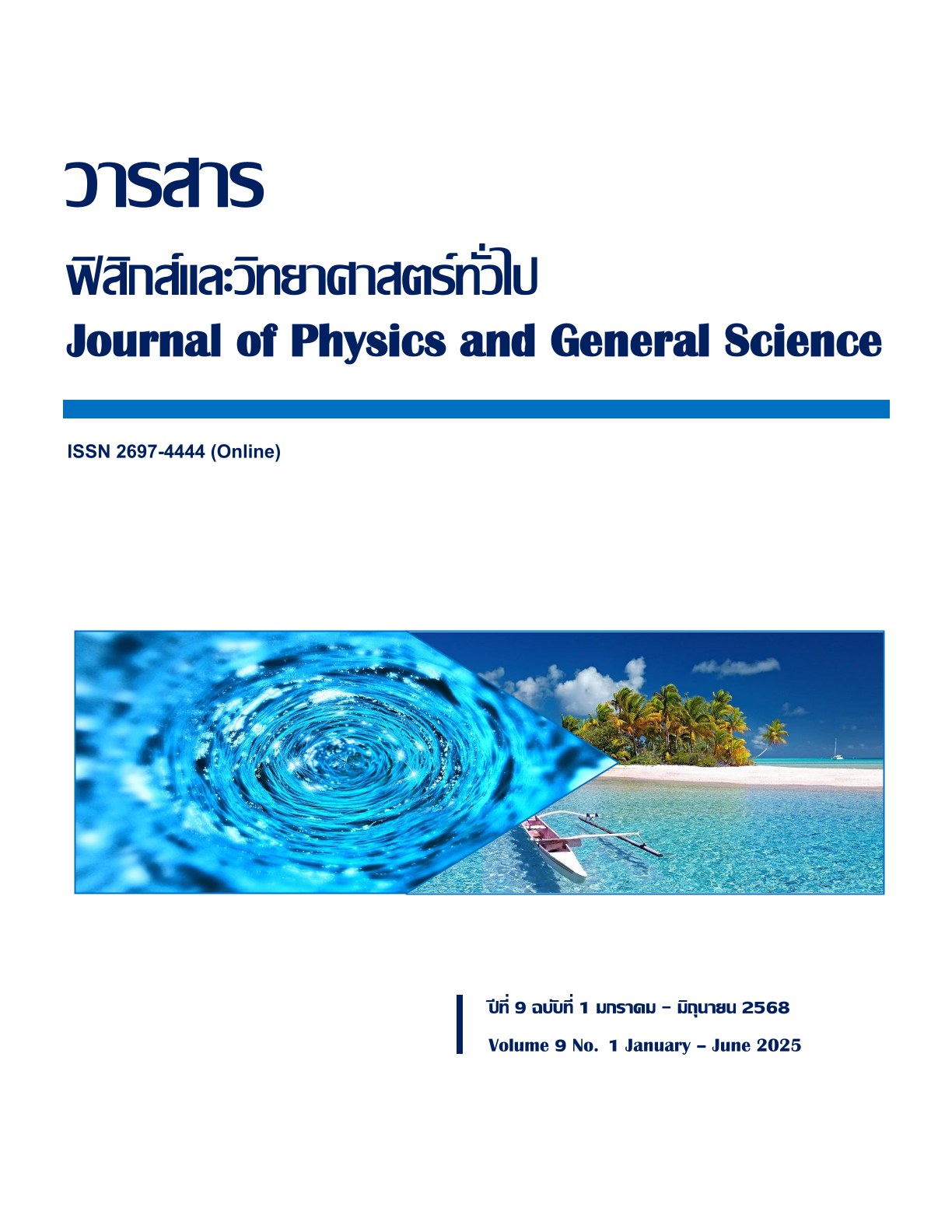Impact of Street Lighting on the Growth and Yield of Hom Pathum Off-Season Rice in Nong Lan Subdistrict, Tha Maka District, Kanchanaburi Province
Abstract
This research aims to evaluate the impact of roadside lighting on the growth and yield of Hom Phatum rice in Nong Lan Subdistrict, Mueang District, Kanchanaburi Province, and to analyze the relationship between light intensity and distance from the light source affecting the growth and yield of rice in the paddy fields of Kanchanaburi Province. The experiment was conducted using a Completely Randomized Design (CRD), divided into four levels of light intensity (0, 0–50, 51–100, 101–150 lux), with five replications. The roadside lighting significantly affected the physiological and phenological changes in rice, showing an increase in plant height to 97.7 cm compared to 85.4 cm in the control group. Leaf area and biomass increased by 18.5 g/plant in the illuminated areas, while flowering was delayed to 93.8 days compared to 85.3 days in the control group. Yield per area increased to 729.8 kg/rai compared to 650.3 kg/rai in the control group (rai is a Thai unit of area, approximately 0.16 hectares). However, the percentage of good seeds decreased by 3.8 %. These findings highlight the complexity of the effects of roadside lighting on rice production and emphasize the importance of considering the interactions between infrastructure development and agriculture in land-use planning for rural areas of Thailand.



